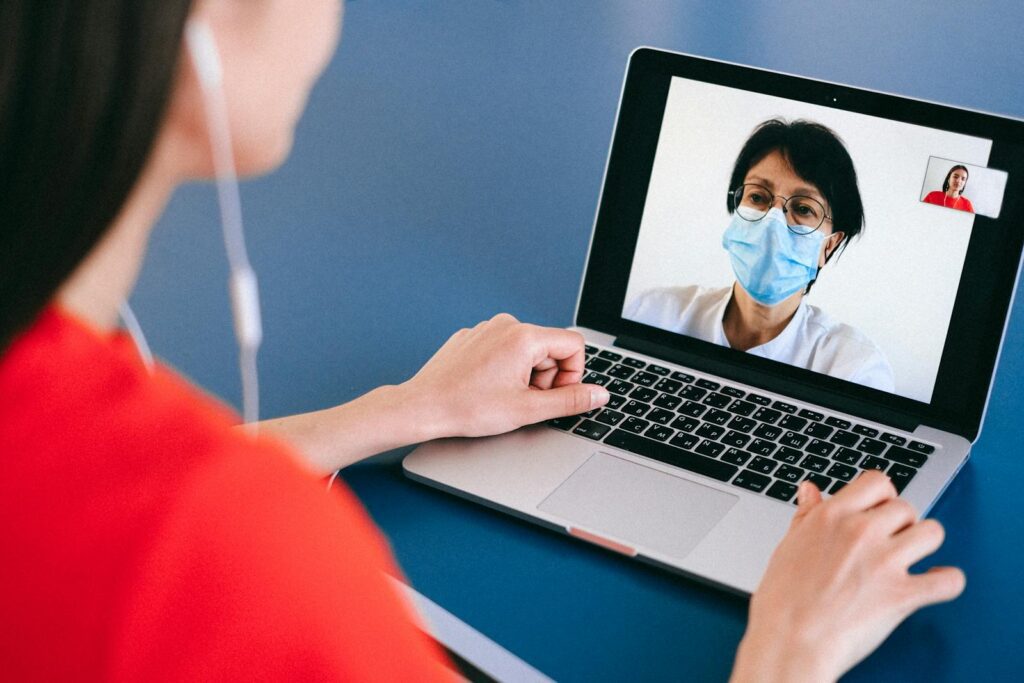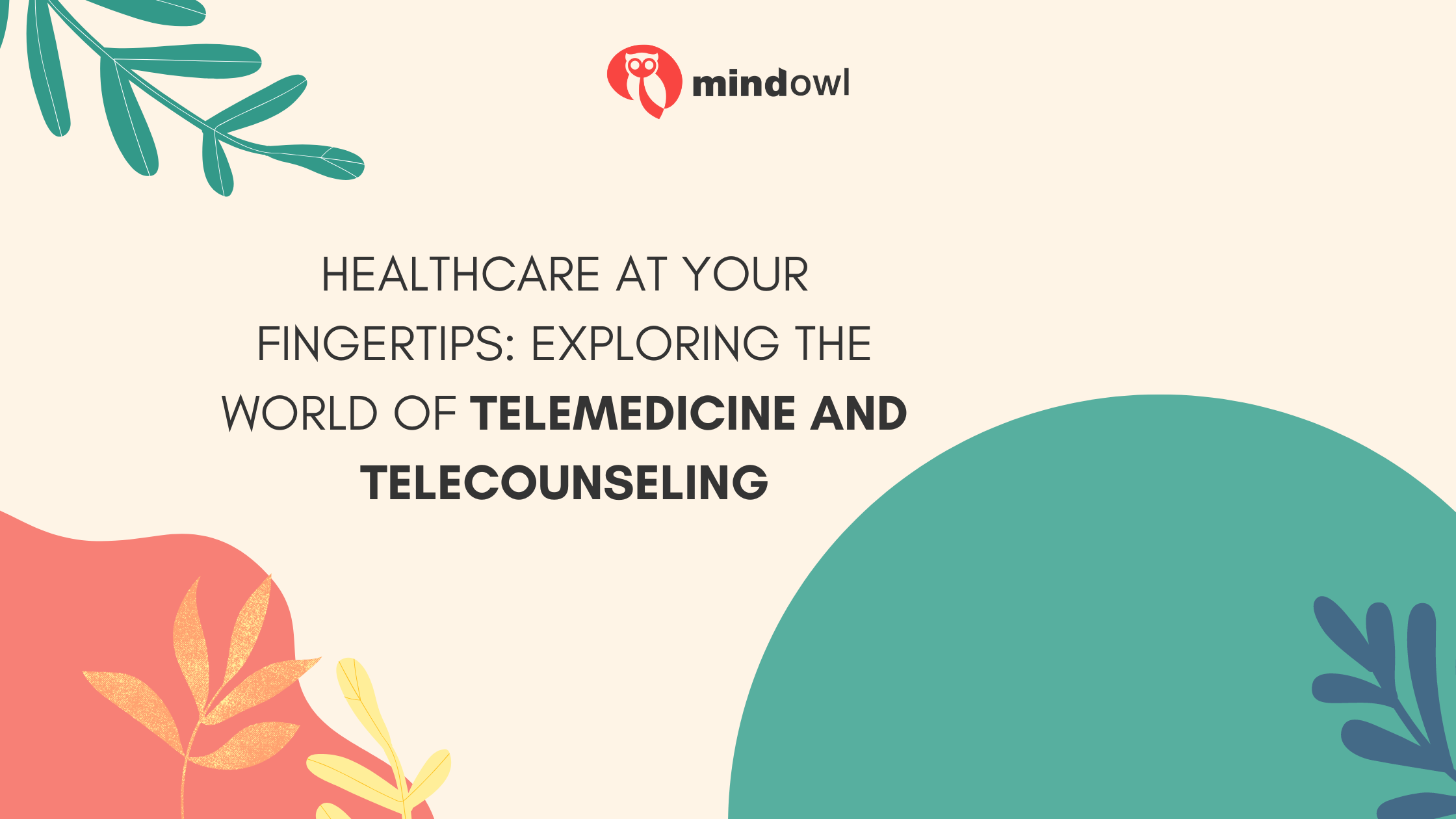Finding it hard to get to the doctor? You’re not alone. Telemedicine and telecounseling are changing that, making health advice available from home. Reputable service providers like HelpCare Plus are at the forefront of this industry. Such medical services provide greater access to care, especially for those living in remote places. They also come in handy for those who lead a busy life. It’s also beneficial if you have a chronic condition requiring ongoing care.
This article will show how these services can make your life easier.
Key Takeaways
- Telemedicine and telecounseling use technology to provide remote healthcare, making medical advice accessible from home.
- They help people in remote areas or with mobility issues by allowing them to consult doctors and therapists through video calls.
- Challenges like limited technology, privacy concerns, and legal issues must be addressed for wider adoption of these services.
- Future advancements will likely include better integration of AI and more comprehensive electronic health records for improved patient care.
- Ongoing research is vital for improving these digital health services, ensuring they are safe and effective, and reducing healthcare disparities.

Understanding Telemedicine, Telehealth, and Telecare
Telemedicine, telehealth, and telecare have distinct yet related features. They all leverage technology to provide remote healthcare services, but each serves different purposes in the realm of digital health.
Differences and similarities
Telemedicine, telehealth, and telecare have become buzzwords in the digital era of healthcare. Each offers unique advantages yet shares the ultimate goal of making healthcare services more accessible and efficient. To understand these closely related concepts, let’s look at their differences and similarities in a simplified manner.
| Aspect | Telemedicine | Telehealth | Telecare |
| Definition | Delivery of healthcare services and information via digital technologies to patients at remote locations. | A broader scope including telemedicine, education, and health-related services through electronic information and telecommunication technologies. | Use of information and communication technologies to offer care and assistance to the elderly or people with long-term conditions, allowing them to live independently. |
| Services Included | Consultations, diagnosis, patient monitoring, therapy sessions | Public health, healthcare education, remote patient monitoring, consultations | Emergency help, daily activity monitoring, fall detection |
| Primary Users | Patients requiring medical advice or diagnosis | Healthcare professionals and patients for a wide range of services | Elderly, disabled, or those with long-term health issues |
| Objective | Improve patient health by offering direct healthcare services | Enhance healthcare system efficiency, education, and access | Provide support and assurance for independent living |
| Equipment | Computers, smartphones, specialized medical devices | Similar to telemedicine plus educational tools and platforms | Wearable devices, home sensors, emergency alarms |
| Examples | Virtual doctor appointments, e-prescriptions | Healthcare provider training, medical hotlines | Lifeline services, remote monitoring systems |
Telemedicine stands out by focusing solely on clinical services, making specialist care reachable to those in distant areas. Telehealth broadens this scope, incorporating education and other services to support the whole healthcare ecosystem. Telecare zeroes in on personal safety and independence, catering specifically to people needing support to live safely at home. Despite these differences, all aim to harness technology, improving healthcare access and efficiency. From patients in remote locations to individuals striving for independence, these digital healthcare solutions offer tailored support, marking a significant evolution in how care is delivered.
Features of Telemedicine and Telecounseling
Remote Healthcare Services
Telemedicine and telecounseling leverage technology to provide remote healthcare services, bringing medical care and mental health support directly to patients, regardless of their location. Key capabilities include:
- Video consultations with doctors, therapists, and other healthcare professionals
- Electronic health records for seamless sharing of patient data
- Remote patient monitoring tools for tracking vital signs, symptoms, and adherence
These services enhance accessibility by enabling patients in remote areas or those with mobility limitations to receive prompt care without the need for travel.
Choosing this option comes with other benefits like cost efficiency and flexibility. Understanding the benefits is crucial to ensuring efficiency. For instance, the portal psychreg.org wrote an article about all the HelpCare Plus Telecounseling benefits.
Virtual Therapy Sessions
Virtual therapy sessions facilitate continuity of care by allowing hospitals and clinics to remotely monitor patients’ recovery progress after discharge.
These online sessions are particularly beneficial during public health crises, such as pandemics, when in-person visits may pose risks. Moreover, virtual therapy sessions provide a safe and convenient platform for individuals to address their mental health concerns, fostering open discussions from the comfort of their homes.
While virtual therapy is not intended to replace in-person sessions entirely, it serves as a valuable complement, enabling healthcare providers to efficiently care for more patients while maintaining a high standard of care.
Accessibility and Convenience
Telemedicine and telecounseling break down barriers to healthcare access, particularly for individuals living in rural areas or those with mobility challenges. Through video consultations on computers or smartphones, patients can connect with doctors and therapists without the need for lengthy travel.
These services also facilitate the seamless sharing of health records and online prescription management, streamlining the healthcare experience. For patients with busy schedules, telemedicine and telecounseling offer unparalleled convenience, allowing them to fit appointments into their daily routines without significant disruptions.
This flexibility encourages regular check-ups and ongoing therapy sessions, promoting better adherence to healthcare regimens and supporting overall well-being.
Choosing the right service
When selecting a telemedicine or telecounseling provider, it’s crucial to ensure they possess the necessary qualifications and expertise. Look for licensed professionals with credentials in the relevant medical or mental health fields, such as board-certified physicians, licensed therapists, or counselors. While doing so, read social proofs like HelpCare Plus reviews to determine if the service provider can handle your condition.
Verify their areas of specialization and experience to ensure they can effectively address your specific needs. Additionally, consider the provider’s communication style and bedside manner, as a good rapport can significantly impact the quality of care and therapeutic outcomes.
Another important factor to consider is the provider’s approach to privacy and security. C Ensure they have clear policies in place to protect your confidential information and maintain the utmost discretion. Reputable providers should also offer transparent pricing structures, accept your insurance coverage, and provide convenient scheduling options that align with your availability and preferences.
Barriers and Challenges
Telemedicine and telecounseling face obstacles such as limited technology, concerns about privacy and security, and legal and regulatory issues. These challenges may hinder their widespread adoption and acceptance in the healthcare industry.
Technological limitations
Not all individuals have access to the latest devices or high-speed internet, which can hinder their ability to fully utilize telehealth services. This digital divide can prevent some patients from participating in video consultations, accessing patient portals, or reviewing electronic health records online, potentially exacerbating existing healthcare disparities.
Additionally, certain geographic areas may still lack the necessary infrastructure for reliable and high-quality video conferencing, which is crucial for effective virtual healthcare delivery. Inconsistent internet connectivity can disrupt consultations and compromise the quality of care.
Technological Proficiency
Successful implementation of telemedicine and telecounseling requires a certain level of technological proficiency from both patients and healthcare professionals. Some medical professionals may face challenges in adapting to new systems, hindering their ability to conduct remote check-ups, securely transmit electronic health records, or effectively utilize telehealth platforms.
Privacy and security concerns
Telemedicine and telecounselling bring health care right to our doorsteps, but they also come with privacy and security risks. The use of AI-enabled services in sharing medical records opens doors for these risks if we don’t protect the data well.
Everyone involved must invest time and resources to ensure patient details are safe. Telemedicine systems must be easy to use and secure enough to keep private information out of the wrong hands.
Patients trust healthcare providers with their most personal details during virtual sessions or while using health apps. This trust means providers must work hard to prevent any unauthorised access to this sensitive information.
Simplified design factors become key in achieving user-friendly yet secure platforms. Ensuring that all shared health records through telecare applications stay protected requires ongoing attention and adaptation from technology developers and healthcare professionals alike.
Legal and regulatory issues
Concerns about privacy loss, confidentiality, fraud, and inaccurate solutions are prevalent. The adoption of telemedicine is hindered by these barriers.
Data protection, patient confidentiality, and compliance with healthcare regulations are critical aspects to consider as telemedicine technology continues to evolve. Additionally, the transmission of medical data from various geographical areas raises concerns about data security and maintaining compliance with healthcare regulations. Reports indicate that legal frameworks for telemedicine are still developing in response to the complexities associated with remote healthcare services.
The Promising Future of Telemedicine and Telecounseling
Telemedicine and telecounseling are innovative solutions poised to become integral parts of the evolving healthcare landscape. These virtual services show great promise in expanding healthcare accessibility, improving health outcomes, and addressing disparities, especially in underserved or remote areas.
Potential for Growth
The future outlook for telemedicine and telecounseling is bright, with significant potential for growth and expansion. The Covid-19 pandemic has already highlighted their value in ensuring continued access to essential medical and mental health services. As technology rapidly advances, we can expect enhanced capabilities through natural language processing, remote specialist consultations, AI integration, and more – further elevating the effectiveness of these services.
Improving Accessibility and Reducing Disparities
Telemedicine and telecounseling play a crucial role in enhancing healthcare accessibility by allowing patients to connect with providers virtually, transcending geographical barriers. This is particularly important for those in remote areas with limited access to specialists or facilities. By offering equal opportunities for quality care, these solutions help reduce healthcare disparities.
Technological Advancements
Advancements like virtual reality, artificial intelligence, wearable devices with IoT systems, and comprehensive electronic health record systems are transforming telemedicine and telecounseling. These innovations promise improved remote patient monitoring, enhanced medical diagnosis, treatment recommendations, and seamless data sharing for better continuity of care.
Continued Research and Evaluation
As these innovative solutions evolve, continued research and evaluation are essential. This effort helps identify best practices, standards, guidelines, and address potential ethical, legal, and regulatory challenges. Moreover, research drives technological progress, shaping the future of healthcare delivery to improve accessibility and reduce disparities further.
Conclusion
Telemedicine and telecounseling are transforming healthcare accessibility by providing virtual access to medical professionals and patient support. These innovative solutions have shown potential in improving healthcare delivery, especially for individuals facing geographical or financial barriers.
Future advancements in telemedicine technologies hold promise for enhancing healthcare services further through AI integration and remote specialist consultations. By leveraging these capabilities, the industry can continue to elevate patient care and bridge the gap in healthcare disparities.
MindOwl Founder – My own struggles in life have led me to this path of understanding the human condition. I graduated with a bachelor’s degree in philosophy before completing a master’s degree in psychology at Regent’s University London. I then completed a postgraduate diploma in philosophical counselling before being trained in ACT (Acceptance and commitment therapy).
I’ve spent the last eight years studying the encounter of meditative practices with modern psychology.

